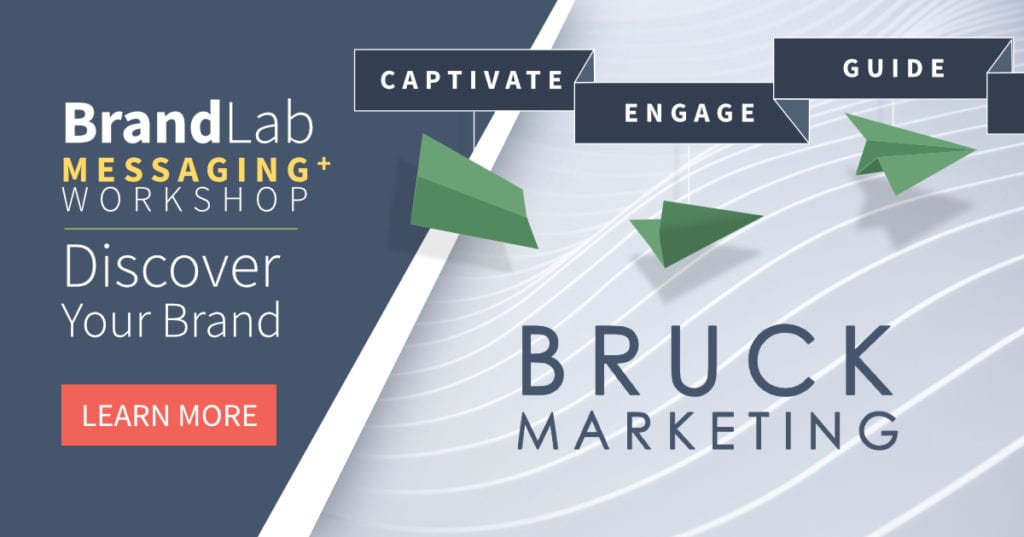At Bruck Marketing, we are proponents of telling stories your ideal customers can relate to. But we also love data. And we think these two things go together like peas and carrots. In this article, we’ll share good ways to use metrics to amplify your story and help you avoid a common error that can work against your message.
Need help with the overall structure and content of your brand message? Start by reading our Engage with Story Templates whitepaper. It’s free!
Today, let’s focus on three especially powerful uses of metrics for brand messages:
- Size Up a Problem
- Show a Trend Toward Action
- Prove Your Authority / Capability
Size Up a Problem
Your story should open by portraying a problem that your ideal customer faces. One of the trickiest parts of writing a brand message is to elegantly make the pivot from talking about the problem to talking about your solution. One great way to pivot is to quantify the problem. Here’s the opening message for a made-up product:
Every day, you return to your city apartment and circle the grid searching for available parking. It’s an exhausting end to a hard day, and an awful waste of time.
Now Quantify It:
You aren’t alone. In fact, each year the average city commuter loses 70 hours and burns through $550 worth of gasoline just searching for parking.
Now that you have quantified and amplified the problem, it’s much more natural to pivot to your solution.
But there’s a potential gotcha here you need to be careful of. Negative social proof (an indication that a non-desirable behavior is the social norm) can work against your message. For instance, if I say “40% of brands fail to use metrics in their brand stories,” I may be amplifying the problem, but I’m also amplifying the inaction.
Consider the inverse statement: “60% of brands use metrics in their brand stories.” When customers hear that the majority of their peers are taking action, they feel an urge to act. They want to do what most people are doing, because it makes them feel safe.
For more on social proof and other decision reflexes that can help or hurt your messaging, check out our Guide with Decision Reflexes whitepaper.
As writers quantify the problem, we sometimes graze the outer edge of negative social proof. If you think you may be too close to the edge, it’s especially important that you show a trend toward positive action.
Show a Trend toward Positive Action
That’s why, in 2019, over a million city commuters turned to technology to improve their parking experience.
The teaser above pivots toward the solution. Now it’s much more natural to start talking about your offering.
The StarkPark mobile app notices when you arrive in your parking radius, alerts you to nearby parking spots as they open up, and directs you to the available spot with voice guidance.
Sounds cool. But does it work? Why should customers trust you? Is this just some experiment you’re trying out?
Prove Your Authority
Prove your authority by expressing one or two of the following:
- The number of customers currently using your product
- The amount of money/time/etc you’ve saved your customers
- How long you typically retain customers
- How long you’ve been in business.
Each of those metrics proves authority and makes your product feel more like a safe bet. People really are drawn to safety.
Over 5 years, we’ve perfected the art of rapidly locating parking spots for our 10,000+ happy subscribers. Join today and stop wasting valuable time.
If you’re a city commuter, we have your attention now, don’t we? That’s because this message engages you with a relatable problem, reminds you what’s at stake, shows you that others like you are taking positive action, and demonstrates authority. Prioritize these elements in your next brand message to maximize clarity and engagement.


